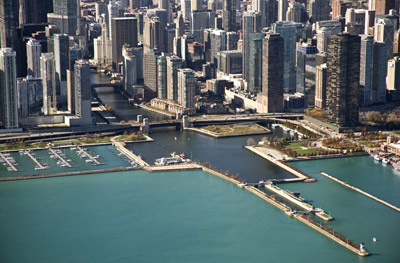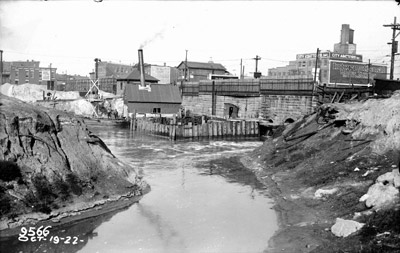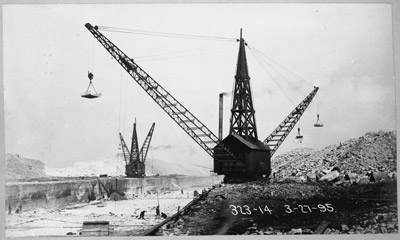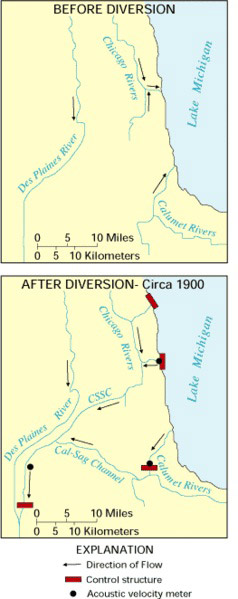Along the Pier

Back to Along the Pier
Back to Along the Pier
The river runs backwards
For most of its history, the Chicago River sluggishly moved water from the plains to Lake Michigan. This meant that raw sewage and other pollutants dumped in the river flowed straight into Chicago's primary source of drinking water. As the city around the river grew, fear of diseases spread, and officials decided to permanently reverse the river's flow, sending its polluted water to the Mississippi River instead. In one of the greatest engineering feats in American history, the city's sanitation district built a 28-mile-long drainage canal. When a steam shovel moved the last of the dirt separating the river and the Chicago Sanitary and Ship Canal on a cold January morning in 1900, the river emptied into the canal and began pulling water from the lake.
To manage the water moving westward, the sanitation district also built the Chicago Harbor Lock in 1938. The lock allows for control of the river's depth and speed. Water levels in the Chicago River have to be kept lower than the lake to ensure that gravity doesn't pull water back toward Lake Michigan. Restricting the flow of water also ensures that the city doesn't take more water from the lake than federal law allows.
To manage the water moving westward, the sanitation district also built the Chicago Harbor Lock in 1938. The lock allows for control of the river's depth and speed. Water levels in the Chicago River have to be kept lower than the lake to ensure that gravity doesn't pull water back toward Lake Michigan. Restricting the flow of water also ensures that the city doesn't take more water from the lake than federal law allows.



